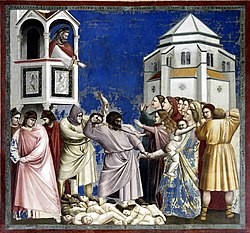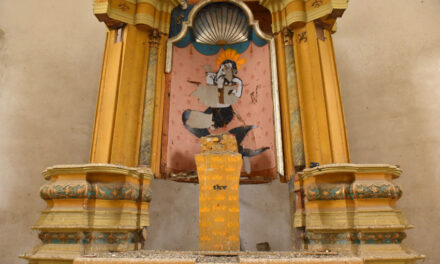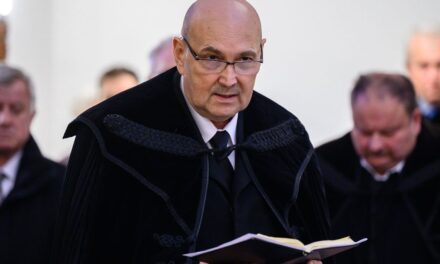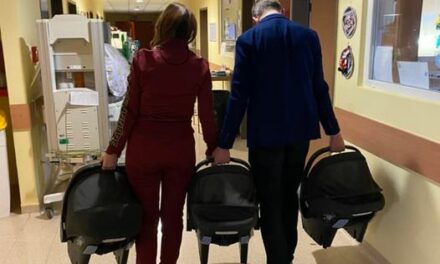On December 28th, we remember the children who were killed by Herod after the birth of Jesus because of the King Messiah who fulfilled the prophetic promises, thinking that he could save his kingdom that way.
The Romans B.C. In 43, the foreign-born Herod was installed in the princely seat, who gained his power through cunning, bribes, oratorical skill and violence. As a result of all this, BC In 40 he was given the title of king by the grace of the Romans, but it was said of him that he "came to the throne like a fox, ruled like a tiger, and died like a dog."
Herod made the country flourish, his empire was almost as big as David's. However, his family life was unhappy: full of jealousy, intrigues, and murders. His last wife and two sons were killed by the king in BC. 7, the year in which the Child, the promised King, was born in Bethlehem. It was then that Herod ordered his subjects to swear allegiance to the emperor, Augustus. The Pharisees refused this, so Herod had six thousand men crucified in Jerusalem. According to Josephus Flavius, the main reason for the carnage was that some of these prophesied about the coming of the Messiah.
The whole country was paralyzed with grief and terror when the wise men from the east appeared in Jerusalem and asked the question: "Where is the newborn king of the Jews?" St. Matthew notes in his Gospel: "Herod was afraid, and all Jerusalem with him." The old Herod, driven mad by the fear of power, immediately summoned the chief priests and the scribes of the people and asked them the question: "Where should the Messiah be born?" They answered that in Bethlehem in Judea, because that is what the prophet Micah had predicted. Upon hearing this, Herod asked the wise men when they saw the star, following which they came to his kingdom, and then sent them to Bethlehem: "Go, get accurate information about the child. If you find it, report it to me so I can go and worship it!” (Matthew 2:2-8).
The wise men set out on their journey, and behold, the star led them to the cave in Bethlehem. There they found the Child they were looking for, prostrated themselves before him and gave him their gifts: gold, frankincense and myrrh. And since they were warned in a dream not to return to Jerusalem, they set off to their homeland by a different route.
As soon as the wise men left Bethlehem, an angel appeared to Joseph in a dream and said: "Get up! Take the child and his mother, flee to Egypt and stay there until I speak, because Herod is looking for the child and wants to kill him!” József obeyed, that very night he set off with Jesus and Mary towards Egypt. "When Herod saw that the wise men had tricked him, he became very angry and killed all the male children in Bethlehem and all around it from two years old and under, according to the time he had learned from the wise men" (Mt 2:13-16). The star of the wise men had been shining in the sky for the second year at that time. This prompted Herod to kill boys under the age of two. He wanted to be sure to destroy the new king as well.
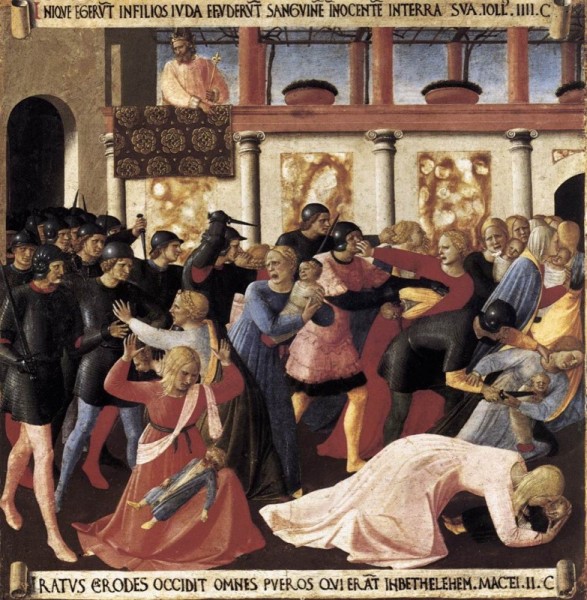
Fra Angelico: The Infanticide in Bethlehem (1451–52)
How many could these little ones have been killed? Herod did not have a record made, and their number was not preserved in local tradition either. There were those who spoke of a dozen children, others, referring to the Book of Revelation, of 144 thousand (7,4). Considering the proportions of the population, if we put the population of Bethlehem at the time of Jesus at approximately one thousand, then the number of murdered boys could have been 30-40.
According to local tradition, the tomb of the "little saints" is under the basilica that Constantine the Great had built over the cave where Jesus was born. In 1347, a friend named Miklós from Poggibonsi visited the Holy Land and noted that to the east of the cave of the Nativity "there is another cave, which continues in a narrow, cross-shaped cave. The minor saints are buried there. The graves were cut very close to each other in the rock, like a manger with horses". The burial cave was walled in during the 15th century and was not known about for a long time. In 1962, they noticed the walled-up entrance, and when they opened it, they discovered the cross-shaped burial cave. At the end of the three legs of the cross, under a curved opening at a height of about one meter, they noticed depressions, these are the children's graves that look like abrakos.
The church honors the "little saints" as martyrs, who could not yet testify about Christ with words, but with the shedding of their blood they testified that He is the one the prophets had prophesied about, the King who will rule the nations with an iron rod.
Their feast is celebrated on December 29 by the Eastern Church, and on December 28 by the Roman Church since the 4th century.
You can read the entire article in Magyar Kurír
Featured image: Giotto di Bondone: The Infanticide at Bethlehem (1315–1320)

